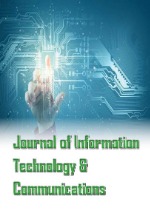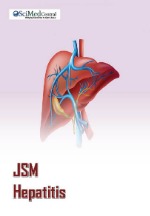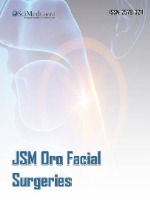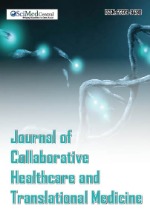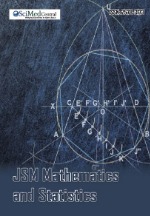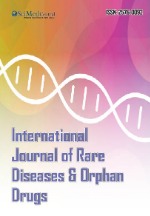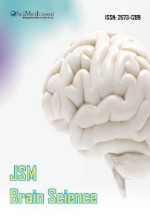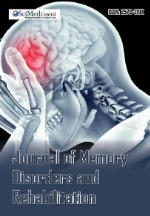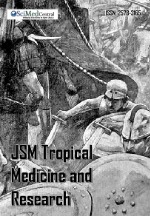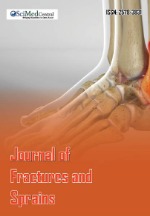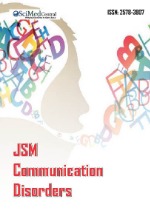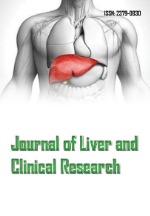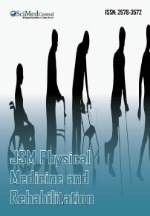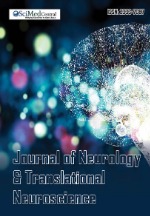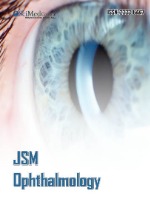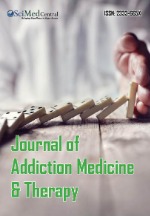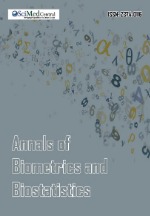A Comparative Study of the Separation of Powers in Iran and the Concept of Separation of Powers in Jean-Jacques Rousseau’s Thought
- 1. University PhD student in Public Law, Islamic Azad University, Iran
Abstract
The concept of separation of powers is a cornerstone in Western political and governmental philosophy, aimed at ensuring balance and restraint in governance. This separation serves as a counterbalance to unchecked authority, preventing power from becoming absolute or oppressive. Jean-Jacques Rousseau’s perspective on the separation of powers, influenced by Montesquieu’s The Spirit of the Laws, emphasizes its necessity, sometimes explicitly and other times implicitly. Rousseau’s model divides authority into legislative, executive, and judicial branches. This study adopts a library-based research approach, gathering resources and applying analytical methods to conduct a comparative analysis of the separation of powers in the constitutional framework of the Islamic Republic of Iran and Rousseau’s philosophical thought. The central question explored in this research is whether Rousseau’s interpretation of the separation of powers aligns with its application in Islamic jurisprudence and the constitutional law of the Islamic Republic of Iran. The findings of this study suggest that Rousseau’s (and Western schools’) conception of the separation of powers fundamentally differs from the framework applied in the Islamic Republic of Iran. In Islamic principles, the separation of powers does not hold a foundational position, as power is regarded as a tool for humanity, not an end in itself, and is therefore not inherently corrupt or unrestrained. Furthermore, in Islamic thought, the concept of Ismah (infallibility) in the era of an infallible Imam prevents deviation and infringement on others’ rights. In the absence of the Imam, the Taqwa (piety) and justice of the Velayat-e Faqih (Guardianship of the Jurist) act as safeguards against despotism and political corruption. In contrast, Rousseau’s philosophy focuses on society and the general will of the people, emphasizing the creation of a system with a clear separation of powers and active participation of citizens in political decision-making. On the other hand, the Islamic Republic of Iran operates under the principle of Velayat-e Faqih, wherein executive, legislative, and judicial institutions function under the supervision of the Supreme Leader. This centralized system, due to its limitations on the separation of powers, may lead to an over-concentration of power in specific institutions. Both models reflect the values and conditions of their respective contexts. While Rousseau advocates for direct democracy and active public participation, the Iranian system prioritizes a centralized structure influenced by Islamic principles. Each approach carries distinct implications for the society it governs.
Keywords
• Separation of Powers
• Rousseau
• Sovereignty
• Constitution
• Legislation
CITATION
Mahvar MA (2025) A Comparative Study of the Separation of Powers in Iran and the Concept of Separation of Powers in Jean-Jacques Rousseau’s Thought. Ann Otolaryngol Rhinol 12(2): 1354.
INTRODUCTION
The evolution of the concept of the separation of powers has fluctuated throughout history, sometimes expanding widely and at other times narrowing significantly. During the medieval period, the idea of the separation of powers was encapsulated in the doctrine of the “Two Swords,” which divided authority between the state and the church, with neither asserting superiority over the other.
A more structured theory of separation of powers gained recognition in constitutional law and political systems from the 19th century onward. However, its roots can be traced back to Aristotle and ancient Greece, wherehe acknowledged three distinct powers, albeit without advocating for their separation or systematic application.
The formalization of the separation of powers as a coherent theory emerged from the political philosophy of Montesquieu, who lived during the era of absolutist monarchies in Europe. Profoundly influenced by England’s extraordinary level of political freedoms, Montesquieu devoted himself to an extensive study aimed at safeguarding individual liberty. His seminal work, The Spirit of the Laws, laid the foundation for the modern theory of the separation of powers.
In Iran, the concept of the separation of powers surfaced during the Constitutional Revolution. Under the framework of the Islamic Republic of Iran, sovereignty is rooted in divine authority (theocracy), which is delegated to the infallible (Ma’sum), during their presence and, in their absence, to the Velayat-e Faqih (Guardianship of the Jurist). Consequently, the initial concentration of judicial, executive, and legislative powers in a single individual does not inherently pose a flaw. However, given that power is inherently corruptive and the government is non-infallible, the separation of these functions becomes a logical necessity to prevent despotism.
In Rousseau’s philosophy, the separation of powers is essential for preventing excessive centralization of authority and preserving individual freedom, ensuring that members of society actively participate in political decision-making.
Conversely, in the governance structure of the Islamic Republic of Iran, executive, legislative, and judicial powers operate under the supervision of the Supreme Leader. This system is based on the principle of Velayat-e Faqih, which governs Iranian society according to Islamic principles and the guidance of religious authorities.
Given these distinctions, it can be concluded that Rousseau’s theory emphasizes the separation of powers as a means of safeguarding individual freedoms and rights. In contrast, the Iranian governmental structure does not adhere to the classical model of separation of powers, instead concentrating authority in the executive branch under the leadership of the Supreme Leader. These differences significantly shape the policies and governance approaches in the two societies.
HISTORICAL EVOLUTION OF THE THEORY OF SEPARATION OF POWERS
Philosophers and thinkers have played a crucial role in shaping the theory of separation of powers and the quest for an ideal system of governance. Their intellectual and political efforts have largely centered on defining the scope of rulers’ authority and establishing boundaries on power to secure individual and collective prosperity.
Plato and his distinguished student Aristotle significantly contributed to the development of this theory, being among the first to propose coherent foundations for it. In his works, Plato emphasized the necessity of dividing and distributing governmental authority among various entities. He regarded this division as a means to eliminate centralized power, thereby preventing chaos and despotism in political systems. Plato’s ideas, to a great extent, align with the contemporary understanding of the separation of powers.
The lifespan of Montesquieu: 1689-1755
The division of governmental responsibilities among the three branches—legislative, executive, and judicial— ensures balance and serves as a safeguard for individual rights and freedoms. This arrangement prevents the concentration of power in the hands of a limited minority and ensures a clear distinction of functions among different branches of government. Furthermore, the separation of tasks and delineation of competencies allows legislative, executive, and judicial activities to be carried out efficiently, minimizing overlap and ensuring that responsibilities are executed without interference [1].
Some scholars regard Aristotle as the primary originator of the idea of separation of powers. However, other thinkers argue that Aristotle’s conception of the three branches of government differs significantly from the modern understanding. Aristotle’s legislative branch, for example, included elements of executive and judicial authority and involved ordinary citizens [2]. In practice, Aristotle’s model often resulted in a blending of powers rather than their strict separation. Nevertheless, he fundamentally advocated for the division of political authority into three distinct branches: the legislative, executive, and judicial branches [3]. Despite the lack of consensus among scholars on the precise origins of the theory, there is a shared acknowledgment of its recognition as a fundamental principle in the legal traditions of various nations. Since its inception, the theory of separation of powers has been a central focus of study for both Western and Muslim intellectuals. Many scholars have elaborated on and analyzed this concept in their works, exploring its implications and applications [1]. While the notion of division of labor and allocation of responsibilities among various institutions and authorities dates back to ancient Greece and finds its roots in the ideas of Plato, Aristotle, and others, the theory of separation of powers as a distinct principle emerged fully after the French Revolution in the 18th century. During this period, the division of government into legislative, executive, and judicial branches gained widespread acceptance as a cornerstone of democratic governance [4]. The foundation of the theory lies in the belief that the greatest threat to individual rights and freedoms arises from concentrated power, leading to tyranny and autocracy. The separation of powers is viewed as an essential safeguard against this danger, ensuring the balance of authority and preventing its misuse.
In any case, both the philosophers of ancient times and the thinkers of the modern era, as well as past and present public jurists, have relied on the principle of separation of powers to alleviate the fear of corrupt and autocratic concentration of authority in a single person or group. This is because, by the nature of things and the circumstances inherent in centralization, those who hold power are constantly tempted to misuse it. Unlimited power leads to arbitrariness, and arbitrariness becomes the root of various forms of corruption and deviation [5].
THEORETICAL FOUNDATIONS THE SEPARATION OF POWERS THE NECESSITY OF A GOVERNING AUTHORITY
Since humans are inherently social beings, requiring a social system to manage their lives, and given that human desires are numerous, conflicting, and diverse, there arises the potential for encroachment upon others’ rights. To prevent such encroachments and to guarantee the protection of others’ rights, the need for a guiding and leadership apparatus within society becomes crucial. This governing authority is necessary not only to avert moral decay and social corruption but also to guide society toward progress and perfection. Therefore, power is entrusted to the governing body to make necessary decisions within the framework of the system, ensuring the balance and stability of society. In any case, the existence of government in society is undeniable.
The development, expansion, and complexity of society are inherently linked to the existence of governance. It is evident that a state, without a robust structure, political institutions, and their effective implementation, will never be able to assert its sovereignty in the social sphere or fulfill its mission. Therefore, the state establishes its sovereignty through specific institutions and organizations, which, in constitutional law, are referred to as the branches of government or the governing body [6].
THE PHILOSOPHY OF THE SEPARATION OF POWERS
The arguments put forward by some scholars in favor of the separation of powers are based on the premise that the concentration of power in a single entity poses a significant danger to individual and political rights and freedoms. Centralized power inevitably leads to despotism and autocracy. The most effective mechanism for limiting this danger and concentration of power is fragmentation and dispersion, a concept referred to in The Spirit of the Laws as the separation of powers.
Thus, the philosophy of the separation of powers involves breaking down power and preventing its concentration in a single entity. The corrupting nature of power is a historical reality, and its remedy lies in distributing power among various institutions. However, it seems that while the idea of the separation of powers appears rational and logical at first glance, one major flaw remains: although the separation of powers may prevent corruption to some extent, the inherent nature of power and authority still persists, and despotism and autocracy can still emerge within that framework. This problem becomes more apparent in the case of absolute separation of powers, but in a more relative separation, power is constrained, with each branch of government overseeing the others, and the potential for despotism becomes less pronounced.
Therefore, the feasibility of dismissal and oversight, for the limited power constrained by law, is considered in order to further restrict the scope of power.
SEPARATION OF POWERS IN IRAN
The separation of powers in Iran can be divided into two periods: the first period corresponds to the Constitutional Era (formal separation), and the second relates to the Islamic Revolution of Iran (authentic separation).
The Constitutional Era
During the first period, which dates back to the Constitutional Era in Iran, the separation of powers was neither complete nor properly established. The major branches of power were under the control and authority of the Shah. In this era, there was no serious effort to create a precise balance or separation between the different branches of government. In fact, even the executive branch’s powers were entirely at the Shah’s disposal.
Before the Constitutional Revolution, Mirza Hossein Khan Sepahsalar sought to establish a legislative body and parliament as the foundation for the separation of powers and to give the government a lawful appearance. His aim was to create a balance of power, but his efforts neither limited the government nor achieved a check on authority [7].
Mostashar al-Dowleh also discussed the “separation of legislative power from executive power,” suggesting that the drafting and regulation of laws should fall under the jurisdiction of one parliament, while enforcement should be the responsibility of another [8].
It seems that Mostashar al-Dowleh’s reference to the separation between the two assemblies corresponds to the concept of the separation of powers, although his statements are filled with ambiguities. On one hand, he only addresses the two assemblies, while on the other hand, he makes no mention of the judiciary or the executive branch.
Foroughi, in his treatise on constitutional law, states that if the lawmaker and the law enforcer are the same, despotism is inevitable. He refers to the separation of these two as the “principle of the separation of state authorities”[9].
Foroughi also speaks of two branches instead of three. The Shah, in a written objection, regarded the separation of the executive and legislative branches as a means of establishing order and systematizing affairs [8].
The separation of powers is mentioned in the Constitution of the Constitutional Era and its Supplementary Law. Article 28 of this Constitution addresses the three branches of government and explicitly emphasizes their separation.
However, the question arises: How was the separation of powers implemented during the Constitutional Era? Was the separation of powers absolute, or was a relative separation in place? Malkam Khan, one of the intellectuals of this era, states in his treatise Lashkar va Majles-e Edareh:
“Europeans recognize two types of administration: one is discretionary administration, and the other is legal administration.” According to this classification, discretionary administration is under the control of the government, while legal administration is assigned to the legislative branch. Although intellectuals such as Malkam Khan, Foroughi, and others sought to explain the separation of powers, it appears that the separation and division of powers during this period were merely superficial and lacked a genuine framework. Power was concentrated in the hands of the Shah, who held the authority to appoint and dismiss officials at will.
The Era of Authentic Separation
The separation of powers in the Islamic Republic of Iran began simultaneously with the establishment of the government in 1979. However, the structure of powers in Iran was formed based on the Islamic Republic system. During this period, the powers were divided into the Executive Branch (headed by the Prime Minister), the Supreme Judicial Council, and the Legislative Branch. In the 1989 constitutional revision, the authorities of the Supreme Judicial Council were transferred to the Judiciary, and the powers of the Prime Minister were granted to the President and the Executive Branch, alongside other principles that were revised.
The system governing the Islamic Republic of Iran interprets the separation of powers as the distribution of authority among the three branches to prevent the concentration of power in one branch. From this perspective, some believe in the existence of a balancing authority at the apex of the hierarchy, represented by the institution of Velayat-e Faqih (Guardianship of the Islamic Jurist). This institution intervenes in cases of disputes to regulate and balance the three branches of power.
In the Constitution of the Islamic Republic of Iran, the principle of separation of powers is applied. Article 57 divides the governing powers into three branches: the Legislative, Executive, and Judiciary. These branches operate under the supervision of Velayat-e Faqih while remaining independent of one another in performing their duties and responsibilities.
An analysis of this article reveals the distinction between Iran’s legal system and Western schools of thought and systems. The approach to the separation of powers in the Islamic Republic of Iran is portrayed as a justification for and a mechanism to enhance the efficiency of the system. In contrast, the philosophy of separation of powers in Western political systems stems from the belief that power inherently leads to corruption and must be restrained to prevent abuse [10].
However, the Islamic school of thought regards responsibility as a trust placed in individuals. For example, in the fifth letter of Nahj al-Balagha, Ali (peace be upon him) describes attaining power as a “divine trust,” not as prey or a tool for exploiting power. He emphasizes that one has no inherent right to act arbitrarily toward the people, stating: “You have no privilege over them to do as you please.”
Here, the question arises: Is the separation of powers in the Islamic Republic of Iran an absolute division, with completely independent branches, as seen in the United States? Or does the proposed separation of powers in Iran adopt a relative division of authority?
By carefully examining the principles of the Constitution, answers to the above questions can be derived. Absolute separation of powers exists where each branch independently performs its functions and duties without interference from the others. However, upon closely analyzing the concept of absolute separation and the principles of the Constitution of the Islamic Republic of Iran, it becomes evident that each branch influences and is impacted by the others to some extent. For instance, the primary function of the legislative branch is to legislate on societal matters, while the executive branch is primarily responsible for enforcing laws and performing administrative and executive tasks. Nevertheless, some legislative and quasi-legislative responsibilities have been delegated to the executive branch, such as the permanent approval of the statutes of organizations, companies, and institutions that are governmental or affiliated with the government. Additionally, the approval of regulations related to the Expediency Discernment Council is entrusted to the council members themselves for drafting and ratification. Similarly, the legislature has been given roles in certain executive matters. For example, obtaining or granting loans and non-repayable financial aid, whether domestic or international, requires parliamentary approval (Article 80). Likewise, the transfer of national treasures, including buildings and state-owned assets, is permissible only with the approval of the parliament (Article 83).
Conversely, the legislature exercises oversight and influence over the executive branch through mechanisms such as questioning and impeachment. This oversight limits the executive branch’s scope of action and restricts the risks of authoritarianism by imposing checks on its operations.
The answer to the previous question—whether the separation of powers mentioned in the Constitution constitutes a relative separation—becomes clear upon examining the elements associated with relative separation. The intent of the framers of the Constitution and legal analysts appears to be a relative separation of powers. The elements characteristic of absolute separation are not observed in this framework. Moreover, the overlap and reciprocal influence of each branch on the others, as well as the intervention of branches in each other’s affairs, diminish the notion of absolute separation and affirm the principle of relative separation.
The hierarchical structure and conical framework observed in the Islamic Republic of Iran place the Velayat-e Faqih (Guardianship of the Islamic Jurist) at the apex. This role acts as the unifying and organizing factor among the branches [11].
The most influential and significant figure in the Islamic political society is the Leader (Velayat-e Faqih), to whom decisions and the formulation of general policies in each branch ultimately lead. Thus, in the Islamic Republic of Iran, the leadership of the country and the headship of the executive branch rest with the Leader, under whose authority the three branches of government operate.
It appears that the type of separation of powers envisioned with the Velayat-e Faqih (Guardianship of the Islamic Jurist) at its apex, with the branches operating under its supervision, is unique to the Islamic Republic of Iran. The origin of this theory lies in the political and jurisprudential thought of Ayatollah Khomeini, who viewed the scope of authority and governance as delegated by God to the Infallibles (Ma’sumin) and, during their absence, to a fully qualified jurist (Vali-e Faqih), endowed with the full authority of God’s vicegerency (Khilafatullah). In his speech on September 19, 1979, in the city of Qom, Ayatollah Khomeini stated: (...Speakers and writers should not fear Islamic governance or the concept of Velayat-e Faqih. The Velayat-e Faqih, as prescribed by Islam and established by our Imams, does not harm anyone...)
However, some have argued that in the Islamic Republic of Iran, where the Velayat-e Faqih sits at the apex of the hierarchy, its legitimacy is rooted in religious and jurisprudential principles and is unrelated to the theory of separation of powers. Moreover, they assert that the concepts of absolute and relative separation of powers originate from parliamentary and presidential systems, characteristics that the political system of Iran does not possess.
Others, citing Article 57 of the Constitution, which states that the three branches of government operate under the supervision of the Velayat-e Motlaq-e Amr (the absolute guardianship), justify the Leader’s supervisory role over these branches and even consider the Leadership as a “fourth branch” of government [12].
The article related to the duties of the Leader in the Constitution (Article 110) serves to delimit the scope of Article 57 and, to some extent, frame the vast authority granted to the Leader. This raises the question: Is the Velayat-e Motlaq-e Faqih (Absolute Guardianship of the Jurist) mentioned in Article 57 the same concept of Velayat-e Faqih that has been a subject of scholarly debate among jurists, resulting in various interpretations? Some, like Ayatollah Khomeini, have expanded its scope, while others, such as Ayatollah Naeini, Ayatollah Khoei, and others, have proposed a more limited interpretation. Another question arises: if the Velayat-e Faqih referred to in Article 57 aligns with the interpretation of the Founder of the Revolution, then does Article 110, which defines the boundaries of this absolute authority, become redundant and meaningless?
A criticism of the separation of powers in Iran is that the Constitution identifies the three branches as the governing authorities of the Islamic Republic and delineates their duties and functions. However, the delegation of legislative processes to entities outside the legislative branch— entities not explicitly mentioned in the Constitution—and the positioning of multiple powers alongside or beyond the three main branches fundamentally reject Montesquieu›s concept of separation of powers. Instead, it establishes a unique and unprecedented model of multi-tiered separation of powers within the Islamic Republic of Iran.
TYPES OF SEPARATION
Absolute Separation of Powers
Some drafters of the United States Constitution (1787) and the framers of the French Constitution (1791) interpreted Montesquieu’s concept of separation of powers as an absolute separation. They divided sovereignty equally among the legislative, executive, and judicial branches. Their understanding of absolute separation of powers was the complete non-interference of one branch in the affairs of the others and the absolute independence of each branch from the others.
This model of separation is one in which sovereignty is distributed from the top down, dividing authority independently and distinctly among three separate institutions. In this framework, there is complete disconnection among the branches, making interaction and cooperation between the executive, legislative, and judicial branches difficult. Furthermore, there is no balance or equilibrium among these branches [13].
This type of model (absolute separation) is characteristic of presidential systems. Such systems possess several key features:
1. Each branch performs its duties independently, without interference from the others.
2. The functions of each branch are specialized, and this specialization prevents overlap or interference.
3. There is no hierarchy or superiority among the branches; each operates independently, with legislative responsibilities resting exclusively with the legislative branch and execution handled solely by the executive branch.
Relative Separation of Powers or Cooperative System
This type of separation system is a model where, in practice, we observe cooperation and collaboration between branches to achieve specific national goals. Although relative separation of powers still governs the functions and autonomy of each branch, there is no absolute independence or complete separation between them. Instead, the system is structured so that political governance aims for shared and collaborative functions. This system is more prevalent in regimes characterized by relative balance and equilibrium, commonly referred to as parliamentary regimes [5].
A key feature of parliamentary regimes is their reliance on the parliament, which forms their foundation. In this system, political power rests with political parties, and governance manifests through legislative representatives and general elections. In such regimes, parties seek to attain power by securing a parliamentary majority, and the expansion and distribution of power lie predominantly within the parliament.
SEPARATION OF POWERS IN ROUSSEAU’S THOUGHT
Jean-Jacques Rousseau addressed the concept of separation of powers in his renowned work, The Social Contract. He discusses this separation as the division and designation of distinct powers and responsibilities for each of the executive, legislative, and judicial branches of government. Scattered references to this concept can be found in various parts of his writings. Rousseau, who adopted this approach from Montesquieu, has been cited by many scholars in this regard.
For example, in Chapter Two of The Social Contract, Rousseau states: “Sovereignty has been divided into force and will, the legislative and executive powers, the right to levy taxes, the right to administer justice and declare war, manage domestic affairs, and maintain foreign relations... They imagine the government as a terrifying entity composed of various parts.” Elsewhere, he notes, “It is not good for the lawmaker and the law enforcer to be the same, nor for the assembly of the people to divert its attention from general matters and focus on specific issues.” [14]. From Rousseau’s perspective, the government refers to the body with absolute authority, while the assembly of the people is the legislative power. In this interpretation Rousseau separates the law enforcer from the lawmaker. He limits the scope of the legislature to general and fundamental public-interest legislation, considering its involvement in specific matters undesirable. On the other hand, the domain of specific issues pertains to the executive power, managed through mechanisms such as presenting bills, issuing directives, and regulations.
Separation of Powers and the Difference Between Montesquieu’s and Rousseau’s Theories
In Montesquieu’s thought, as presented in The Spirit of the Laws, he describes the separation of powers in England as follows:
“In the structure of this country, there are three powers, each performing its own function and separated from the others. First, the legislative power, by which the king or legislature enacts laws for a specific period or permanently, and amends or repeals existing laws. Second, the power that enforces matters related to international law, through which the government ensures the country’s external security, prevents foreign invasions, declares war and peace, sends envoys, and receives ambassadors from other countries. Third, the power that enforces matters related to civil law, which judges disputes between individuals, resolves claims, and punishes crimes; this is also called the ‘judiciary’” (Mohtadi,1960:296).
Montesquieu states that every government, regardless of its regime type (republican, monarchical, or despotic) and political structure, has three main functions:
1. Legislative Power (law-making)
2. Executive Power (law enforcement)
3. Judicial Power (resolving disputes)
The structure of Rousseau’s separation of powers differs from Montesquieu’s. Rousseau emphasizes popular sovereignty, asserting that legislation and governing authority stem directly from the people. He does not accept the horizontal separation proposed by Montesquieu and John Locke, where branches operate on the same level. Instead, Rousseau views the separation of powers vertically, in a hierarchical manner, placing supreme authority in the assembly of the people. Rousseau believes that the legislative power should be exercised solely through the will of the people, and the executive power operates as an agent of the legislative. In other words, Rousseau’s model suggests cooperation between the legislative and executive branches, rather than their independence or separation. This concept seems to align with parliamentary systems, such as in the United Kingdom, while Montesquieu’s ideas find practical application in presidential systems like that of the United States.
From Rousseau’s perspective, the judiciary does not possess absolute independence from the executive power, nor does it have influence over the legislature. He views the social status of judges as being similar to other governmental officials.
Although Rousseau recognized that the executive power is controlled and supervised by the assembly of the people and the legislature, he still regarded it as a significant threat to sovereignty due to its expansive authority and the potential for despotism. Therefore, he strongly advocated for the distribution and decentralization of executive power across various institutions. In Chapter Four of The Social Contract, Rousseau states: “Since the state is nothing more than a moral entity whose existence depends on the unity of its members, and since its foremost concern is self-preservation, it must possess a vigilant and deliberate force that guides each part in a way most beneficial to the whole and makes use of it accordingly.”
Comparative Analysis of the Separation of Powers in Iran and Rousseau’s Thought
In Iran, the structure of the separation of powers differs from Rousseau’s philosophical ideas. Iran’s political system is based on the principle of Velayat-e Faqih (Guardianship of the Jurist), where the Supreme Leader stands at the apex of the hierarchy, exercising political and religious authority over the three branches of government (legislative, executive, and judicial). The Supreme Leader also supervises and regulates these branches. In the Islamic Republic, discussions about the division and independence of powers, or the relationships among them, are not primarily aimed at preventing the illegitimate concentration of power or corruption. This is because it is assumed that an individual with the necessary qualifications and abilities, aligned with Islamic principles, can be at the head of all branches and powerful institutions in an Islamic society without leading to corruption. According to Shia beliefs, the Imams in an Islamic government were absolute and unrestricted rulers who governed society solely based on divine duty.
From the perspective of Islamic principles, the separation of powers is not necessary, and it is not the case that the provision of social interests depends on it. If, under certain conditions, one person can perform the three functions of legislation, judgment, and enforcement better than anyone else, then there is no rational objection to them simultaneously undertaking all three roles. In the earliest Islamic community that formed in Medina, which was small and simple, the Prophet Muhammad personally held the leadership of all three powers, and no issues arose from this arrangement. Therefore, the principle of separation of powers, based on its Western foundations, has no meaning within the Islamic governance system, as both the Imam and the Prophet are free from any faults or errors. Even in the era of occultation, the conditions of justice, jurisprudence, and piety in the ruler prevent this. The power of the infallible Imam, who is protected from error, is not corrupting and does not require moderation. Thus, “in Islam, the division of responsibilities among the branches is accepted as a means to facilitate governance and to specialize in it. In fact, the theory of separation of powers is not acceptable based on the primary principles of the Islamic political system; however, due to necessity and secondary matters regarding the division of labor, the fragmentation of power and the division of branches can be accepted. The independence of the branches, while maintaining their concentration, is acknowledged”[4].
The philosophy of the separation of powers in political systems around the world aims to escape corruption and concentrate power. In contrast, the purpose of dividing the functions of powers in the Islamic political system is more about efficiency, achieved through the distribution and division of power. It thus becomes clear how problematic and misleading it is to compare two systems of separation of powers without considering the foundations of these systems. However, explaining the philosophy of separation of powers in the Western system alongside the explanation of the philosophy of concentration of powers in the Islamic system, and comparing the two, is an important matter that requires thorough investigation. Research in this area will provide significant insights for scholars, as exploring the philosophy of separation of powers in studies is essential [4].
In Rousseau’s thought, the concept of the social contract and the general will of the people form the foundation and backbone of government. From his perspective, direct democracy significantly influences the process of government formation, where citizens actively participate in decision-making processes. This approach can contribute to a more democratic and inclusive society, ensuring the rights and freedoms of citizens while reducing the potential for abuse of power. In this framework, the powers are separated, and hierarchical oversight occurs from the bottom up, with the freedom of citizens presented as both a right and a duty toward governance. However, the challenge that threatens and limits the separation of powers in Iran lies in ensuring accountability and the lack of transparency in government and the state.
CONCLUSION
The Iranian legal system does not view the separation of powers as a means to limit the actions and authority of the Supreme Leader, but rather as a tool for better governance and a valuable asset in managing the state. The Supreme Leader supervises the three branches of government and provides necessary directives in case of deviations, as he considers the legitimacy of governance to be divine, with the conditions of piety and justice as foundational for authority. This perspective eliminates concerns about despotism and oppression due to the prerequisites of piety and justice. Additionally, internal and external oversight ensures the restraint of unchecked power. Thus, the separation of powers in the Islamic Republic of Iran is seen as a mechanism to achieve progressive Islamic goals. In contrast, the separation of powers in Rousseau’s thought, inspired by Montesquieu, aims for a balance and equilibrium of power to prevent abuse. The role of the people is crucial in the manifestation of this separation. Rousseau’s social contract highlights the relationship between the governed and the governing body, serving to connect these two entities, which in turn guarantees the enforcement of law and the preservation of citizens’ political and civil freedoms. The theory of separation of powers has no meaning within an Islamic governance system based on Western foundations, as the consolidation of power in the infallible Imam is immune to error and corruption, thus eliminating the need for balance and equilibrium. In the era of occultation, the conditions of piety and justice prevent corruption and abuse of power and authority. However, on the other hand, the role of the people in this governance and the challenge to authority appears to be diminished. Nonetheless, one can emphasize the role of the people within this separation by referring to legislative criteria, considering the main supervisory body to be the people themselves, which aligns with the thoughts of Jean-Jacques Rousseau. This reflects a manifestation of true democracy, where the balance and equilibrium of power are in the hands of citizens. Although the constitution indirectly and directly anticipates the role of the people in this separation through the actions of parliamentary representatives over the executive branch, it also provides for indirect oversight of the leadership by experts.
A proposed suggestion to enhance the desirability of separation could be the formation of political parties and their active role in attaining power within the three branches of government, as seen in the British system. It appears that the interaction between religious governance and the three branches of power in Iran represents a unique separation that lacks theoretical or practical parallels elsewhere in the world. Notably, in Rousseau›s philosophy, the social contract grants existence to the governing body, where the driving force behind this body stems from legislation. Furthermore, Rousseau views the role of government as an intermediary between the subjects and the governing body, connecting the two. This arrangement ensures the enforcement of laws while preserving the political and civil freedoms of citizens.
REFERENCES
- Parvin Khairallah, Aslani Firouz. Principles and Foundations of Constitutional Law, 2nd Edition, Tehran, University of Tehran Press. 2012.
- Aristotle, Politics. translated by Hamid Enayat, 7th Edition, Tehran, Pocket Books Company, affiliated with Amir Kabir Publishing Institute. 2014.
- Bushehri Jafar. Constitutional Law (Principles and Rules), 2nd Edition, Tehran, Enteshar Joint Stock Company. 2011; 1.
- Abolfazli Ali. The Theory of Separation of Powers from the Perspective of Islamic Political Jurisprudence and the Constitutional Law of the Islamic Republic of Iran, Qom, Level 4 Academic Thesis. 2020.
- Shariatpanahi, Seyyed Abolfazl Ghazi. Constitutional Law and Political Institutions, 14th Edition, Tehran, Mizan Publications. 2016
- Darbkelayi Esmail. A Perspective on Islamic Political Philosophy, 2nd Edition, Qom, Bustan-e-Ketab. 2009.
- Shahi Mohammad Sharif. On the Foundations of Constitutionalism, 1st Edition, Tehran, Contemporary View. 2020.
- Moradkhani F. Formation of the Concept of the Separation of Power In Iran’s Constitutional Revolution, Jud Law J. 2016; 79: 169:191.
- Zargari Nejad, Gholam Hossein. The Treatises of Constitutionalism, 2nd Edition, Tehran, Institute for Humanities and Cultural Studies. 2011; 1.
- Arasteh Hossein Javan. Separation of Powers in the Political System of Islam and the Islamic Republic of Iran. 2016; 49: 51-67.
- Mesbah Yazdi Mohammad Taqi. The Political Theory of Islam, Qom, Imam Khomeini Educational and Research Institute. 2012; 2.
- Shia Ali Ali, Zare Vahid. An Examination of the Theory of Separation of Powers in the Islamic Republic of Iran with a Focus on the Relationship Between the Guardianship of the Jurist and the Separation of Powers, Public Law Knowledge Quarterly, Fall and Winter. 2017; 18.
- Seyyed MT. In The Name of God Theory of Separation of Powers and the Organization of Political Power in the State, Q J State Stud. 2018; 3: 1-35.
- Rousseau Jean-Jacques. The Social Contract: Principles of Political Right, translated by Manouchehr Kia, 2nd Edition, Tehran, Ganjineh Publications. 1973.
- Arasta Mohammad Javad. An Analytical View on the Foundations of the Islamic Republic of Iran, 3rd Edition, Qom, Bustan-e-Ketab. 2012.
- Rousseau Jean-Jacques. The Social Contract, translated by Morteza Kalantarian, 1st Edition, Tehran, Agah. 2000.












